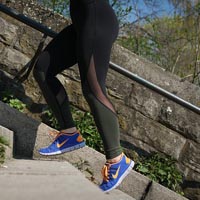Body fat and aerobic capacity of physical education students from a Chilean university

Submitted: 12 August 2021
Accepted: 12 September 2021
Published: 22 October 2021
Accepted: 12 September 2021
Abstract Views: 1040
PDF: 353
HTML: 4
HTML: 4
Publisher's note
All claims expressed in this article are solely those of the authors and do not necessarily represent those of their affiliated organizations, or those of the publisher, the editors and the reviewers. Any product that may be evaluated in this article or claim that may be made by its manufacturer is not guaranteed or endorsed by the publisher.
All claims expressed in this article are solely those of the authors and do not necessarily represent those of their affiliated organizations, or those of the publisher, the editors and the reviewers. Any product that may be evaluated in this article or claim that may be made by its manufacturer is not guaranteed or endorsed by the publisher.
Similar Articles
- Rossana Gomez-Campos, Ruben Vidal-Espinoza, Fredy Muñoz-Muñoz, Fernando Alvear Vasquez, Margot Rivera Portugal, Luis Urzua Alul, Jorge Mendez-Cornejo, Marco Cossio-Bolaños, Systematic review of the anthropometric profile of female futsal players 2010-2020 , European Journal of Translational Myology: Vol. 33 No. 1 (2023)
You may also start an advanced similarity search for this article.

 https://doi.org/10.4081/ejtm.2021.10031
https://doi.org/10.4081/ejtm.2021.10031



